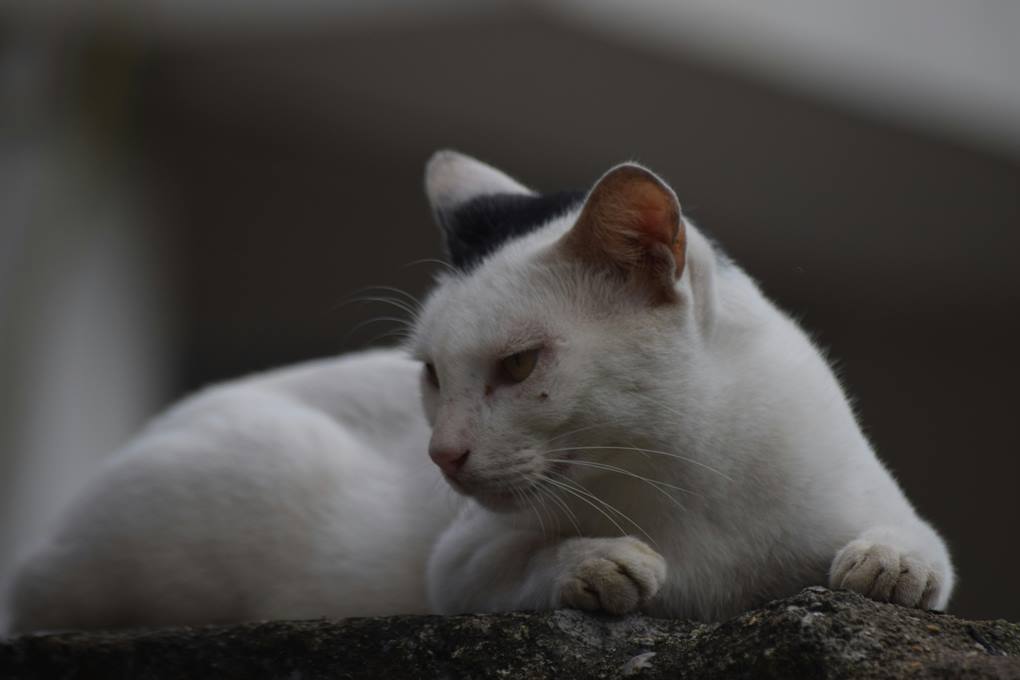In this Article
Katzen sind neugierige, agile und intelligente Wesen, doch vielen Hauskatzen fehlt es an der ersehnten Anregung. Eine Studie der American Society for the Prevention of Cruelty to Animals (ASPCA) aus dem Jahr 2023 ergab, dass 55 % der Hauskatzen Anzeichen von Langeweile zeigen, wie z. B. übermäßiges Schlafen, übermäßiges Fressen oder destruktives Verhalten. Die Schaffung einer speziellen Katzen-Bereicherungszone kann Ihr Zuhause in ein Katzenparadies verwandeln, das körperliche Gesundheit, geistige Fitness und emotionales Wohlbefinden fördert. Dieser Leitfaden bietet von Experten unterstützte Strategien zur Schaffung eines anregenden Bereichs mit Sitzstangen, Spielzeug und Verstecken, die auf die Instinkte und Bedürfnisse Ihrer Katze zugeschnitten sind.
Warum die Beschäftigung von Katzen wichtig ist
Katzen haben sich als Jäger entwickelt und navigieren durch komplexe Umgebungen, um Beute zu verfolgen und Sicherheit zu suchen. Das Leben in Innenräumen ist zwar sicher, beraubt sie aber oft dieser natürlichen Verhaltensweisen. Laut einem Bericht aus dem Jahr 2024 im Journal of Feline Medicine and Surgery reduziert eine anreichernde Umgebung stressbedingtes Verhalten bei Katzen um bis zu 30 % und senkt die Häufigkeit von Fettleibigkeit, einer Krankheit, von der 60 % der Hauskatzen in den USA betroffen sind. Eine anreichernde Zone ahmt die Wildnis nach, indem sie Möglichkeiten zum Klettern, Erkunden, Verstecken und Spielen bietet, die für die körperliche und psychische Gesundheit einer Katze entscheidend sind.
Anreicherungszonen tragen auch modernen Herausforderungen Rechnung. Da 70 % der US-Haushalte Haustiere besitzen (American Pet Products Association, 2025) und viele Besitzer hybride Arbeitszeiten haben, verbringen Katzen oft Stunden allein. Ein gut gestalteter Bereich beschäftigt sie, reduziert Ängste und beugt Problemen wie dem Zerkratzen von Möbeln oder dem Vermeiden der Katzentoilette vor, die laut einer PetMD-Umfrage aus dem Jahr 2024 25 % der Hauskatzen betreffen.
Schritt 1: Verstehen Sie die Bedürfnisse Ihrer Katze
Bevor Sie einen Bereich für die Beschäftigung Ihrer Katze gestalten, sollten Sie die Persönlichkeit und Vorlieben Ihrer Katze berücksichtigen. Laut dem Katzenverhaltensforscher Dr. Mikel Delgado (2023) lassen sich Katzen in drei Verhaltensarchetypen einteilen:
- Entdecker: Neugierige Katzen, die neue Räume und Höhen lieben.
- Jäger: Verspielte Katzen, die jagen und sich auf andere stürzen.
- Introvertierte: Schüchterne Katzen, die es vorziehen, sich zu verstecken und still zu beobachten.
Beobachten Sie, wie Ihre Katze mit ihrer Umgebung interagiert. Springt sie auf Theken? Fledermaust sie nach baumelnden Gegenständen? Rollt sie sich in engen Räumen zusammen? Diese Verhaltensweisen bestimmen Ihre Einrichtung. Achten Sie bei Mehrkatzenhaushalten (30 % der US-Katzenbesitzer laut APPA-Daten von 2025) darauf, dass die Zone unterschiedliche Temperamente berücksichtigt, um Revierstress zu vermeiden.
Schritt 2: Entwerfen Sie das physische Layout
Ein Katzenbereich sollte den vertikalen und horizontalen Raum maximieren und gleichzeitig für Abwechslung sorgen. So richten Sie ihn ein:
Vertikaler Raum: Sitzstangen und Kratzbäume
Katzen suchen Höhe, um Sicherheit und Beobachtungsmöglichkeiten zu haben. Diese Eigenschaft wurzelt in ihrem ursprünglichen Bedürfnis, Raubtieren auszuweichen. Eine Studie aus dem Jahr 2024 in Applied Animal Behavior Science ergab, dass Katzen mit Zugang zu vertikalen Räumen einen um 20 % niedrigeren Cortisolspiegel hatten, was auf weniger Stress hindeutet. Installieren Sie stabile Sitzstangen oder Kratzbäume mit diesen Eigenschaften:
- Höhenvielfalt: Plattformen in 90–180 cm Höhe eignen sich für selbstbewusste Katzen und niedrigere Sitzstangen (30–60 cm) für ältere oder ängstliche Katzen. Laut Chewys Produkttrends 2025 ist ein 1,80 m hoher Baum mit 4–5 Plattformen für die meisten Katzen geeignet.
- Stabilität: Sorgen Sie dafür, dass Bäume verankert sind, um ein Umkippen zu verhindern, da 10 % der Katzenverletzungen auf instabile Möbel zurückzuführen sind (Veterinary Emergency Group, 2024).
- Texturen: Sisalbeschichtete Pfosten zum Kratzen und mit Teppich ausgelegte Plattformen zum Entspannen erfüllen sensorische Bedürfnisse.
Wandregale sind eine platzsparende Alternative, insbesondere in Wohnungen. Ordnen Sie sie im Zickzack-Muster an, um eine Art „Katzenautobahn“ für flüssige Bewegung zu schaffen. Produkte wie das CatastrophiCreations Wandsystem, das 2025 beliebt war, tragen bis zu 27 kg und passen gut zu modernem Dekor.
Horizontaler Raum: Erkundungszonen
Bodenebene Bereiche sollten zum Erkunden und Spielen anregen. Reservieren Sie eine Ecke oder einen Bereich des Raumes (mindestens 1,80 x 1,80 m für eine Katze, 3,00 x 3,00 m für zwei Katzen, gemäß den Richtlinien der Humane Society) mit
- Tunnel: Zusammenklappbare Stofftunnel wie die von Frisco befriedigen die Vorliebe einer Katze für enge Räume. Eine Studie des Feline Behavior Journal aus dem Jahr 2023 ergab, dass Tunnel die Spielzeit um 15 % verlängern.
- Kartons und Taschen: Kartons mit ausgeschnittenen Eingängen oder Papiertüten (ohne Griffe) sind günstige Versteckmöglichkeiten. Wechseln Sie sie wöchentlich aus, um das Interesse der Katze aufrechtzuerhalten, da Katzen laut Delgados Forschung nach 5-7 Tagen das Interesse verlieren.
- Interaktive Matten: Schnüffelmatten mit versteckten Leckerli-Fächern regen den Futtersuchinstinkt an. Eine Petco-Umfrage aus dem Jahr 2024 ergab, dass 80 % der Katzen länger auf Matten bleiben als auf herkömmlichen Spielzeugen.
Verstecke: Sichere Häfen
Verstecken ist ein wichtiger Bewältigungsmechanismus für Katzen. Eine Studie aus dem Jahr 2023 im Journal of Veterinary Behavior berichtete, dass Katzen mit Zugang zu Verstecken 25 % weniger Stressverhalten, wie z. B. übermäßige Fellpflege, zeigten. Dazu gehören:
- Würfel und Iglus: Geschlossene Betten, wie die Thermo-Kitty Hut von K&H Pet Products, bieten Wärme und Geborgenheit. Platzieren Sie sie in ruhigen Ecken.
- Möbelintegration: Hohle Ottomanen oder Regale unter Sofas dienen gleichzeitig als Verstecke und sparen Platz.
- DIY-Optionen: Stapelbare Lagerbehälter mit ausgeschnittenen Eingängen kosten weniger als 10 $ und imitieren natürliche Höhlen.
Schritt 3: Auswahl von Spielzeug zur geistigen Anregung
Spielzeug ist das Herzstück einer Beschäftigungszone und regt den Jagdinstinkt der Katze an. Eine Purina-Studie aus dem Jahr 2024 ergab, dass interaktives Spielen die Angst von Katzen um 22 % reduziert. Wählen Sie Spielzeug entsprechend dem Archetyp Ihrer Katze:
- Für Jäger: Stabspielzeuge wie der Da Bird Feather Teaser imitieren die Bewegungen der Beute. Wechseln Sie die Stäbe alle zwei Wochen, da sich Katzen innerhalb von 10–14 Tagen an vertraute Reize gewöhnen (Delgado, 2023). Laserpointer sind verlockend, aber umstritten – laut einem AVMA-Bericht von 2024 entwickeln 5 % der Katzen einen Jagdzwang. Kombinieren Sie sie daher mit greifbaren Belohnungen, wie zum Beispiel einem Spielzeug zum „Fangen“.
- Für Entdecker: Puzzle-Futterspender wie das Catit Senses Food Maze fordern die Katze zum Problemlösen heraus. Eine PetSmart-Studie aus dem Jahr 2025 zeigte, dass Puzzle-Spielzeug die Aktivität bei bewegungsarmen Katzen um 18 % steigerte.
- Für introvertierte Katzen: Batteriebetriebenes Spielzeug, wie das Hexbug Nano Katzenspielzeug, bietet sanfte Stimulation. Vermeiden Sie lautes oder sich schnell bewegendes Spielzeug, da es 30 % der schüchternen Katzen erschreckt (Feline Behavior Journal, 2024).
Beschränken Sie den Zugriff auf 3-4 Spielzeuge gleichzeitig, um eine Überlastung zu vermeiden. Bewahren Sie zusätzliche Spielzeuge in luftdichten Behältern auf, um den Reiz und den Duft zu bewahren, da Katzen laut einer Studie des Cornell Feline Health Center aus dem Jahr 2023 auf Gerüche angewiesen sind.
Schritt 4: Sensorische Bereicherung
Neben körperlicher Aktivität beschäftigt Katzen auch sensorische Stimulation. Katzen verarbeiten 200 Gerüche pro Sekunde (im Vergleich zu 20 beim Menschen), und ihr Gehör nimmt Frequenzen bis zu 64 kHz wahr, wie eine Studie zur Katzenphysiologie aus dem Jahr 2024 zeigt. Dazu gehören:
- Geruch: Streuen Sie alle zwei Wochen Katzenminze oder Silberwein auf die Kratzbäume, da 70 % der Katzen auf diese Kräuter reagieren (Journal of Feline Medicine, 2023). Wechseln Sie die Kräuter, um eine Desensibilisierung zu vermeiden.
- Visuelle Reize: Platzieren Sie die Zone in der Nähe eines Fensters mit einem Vogelhäuschen im Freien, da das Beobachten von Wildtieren das Interesse um 25 % steigert (ASPCA, 2024). Alternativ unterhalten katzenspezifische Videos, wie die auf den „Cat TV“-Kanälen von YouTube, laut einer Petco-Umfrage aus dem Jahr 2025 60 % der Katzen.
- Akustische Reize: Sanfte klassische Musik, die über Apps wie „Relax My Cat“ gestreamt wird, reduziert laut einer Studie der LSU Veterinary School aus dem Jahr 2023 den Stress bei 65 % der Katzen. Vermeiden Sie plötzliche Geräusche, die bei 40 % der Katzen eine Kampf-oder-Flucht-Reaktion auslösen.
Schritt 5: Sicherheit und Wartung
Sicherheit steht an erster Stelle. Katzen verschlucken 10–15 % der losen Materialien, mit denen sie in Berührung kommen (Veterinary Toxicology Report, 2024). Sichern Sie daher Kleinteile und vermeiden Sie Spielzeug mit abnehmbaren Federn oder Schnüren. Überprüfen Sie Sitzstangen monatlich auf Verschleiß, da ausgefranste Sisal- oder wackelige Plattformen 5 % der Katzenverletzungen verursachen (VEG, 2024). Reinigen Sie den Bereich wöchentlich mit haustierfreundlichen Tüchern, da Bakterien wie E. coli laut einer PetMD-Studie aus dem Jahr 2023 in Stoffbetten gedeihen.
Wechseln Sie alle 7–10 Tage Elemente – Kisten, Spielzeug, Düfte –, um Veränderungen in der Umgebung nachzuahmen. Dies erhöht die Erkundungslust der Tiere um 20 % (Feline Behavior Journal, 2024). Stellen Sie in Mehrkatzenhaushalten pro Katze eine Sitzstange und ein Versteck zur Verfügung, plus ein zusätzliches, um Konflikten vorzubeugen, da laut ASPCA 15 % der Mehrkatzenhaushalte von Aggressionen berichten.
Schritt 6: Budget- und Platzüberlegungen
Bereicherung kostet kein Vermögen. Eine Basiszone für eine Katze kostet laut Chewy-Schätzungen für 2025 50 bis 100 US-Dollar:
- Budgetausstattung: Kartons (0–5 $), selbstgebaute Regale (20 $), Zauberstabspielzeug (10 $) und ein gebrauchter Katzenbaum (30 $).
- Premium-Ausstattung: Modulare Wandsysteme (150 $), interaktive Futterspender (25 $) und beheizte Iglus (40 $).
Für kleine Räume empfiehlt sich die vertikale Gestaltung. Eine 1,20 x 1,20 Meter große Ecke mit Wandregalen und einem Tunnel eignet sich laut den Richtlinien der Humane Society für Wohnungen. In größeren Wohnungen sollten die Elemente über die Räume verteilt werden, um die Revierkartierung zu fördern – ein Verhalten, das laut einer Cornell-Studie aus dem Jahr 2024 80 % der Katzen zeigen.
Das Fazit
Ein Katzenbereich ist mehr als Luxus – er ist für die 90 Millionen Hauskatzen in den USA eine Notwendigkeit (APPA, 2025). Durch die Kombination von Sitzstangen, interaktivem Spielzeug, Verstecken und sensorischer Stimulation schaffen Sie eine dynamische Umgebung, die die Instinkte Ihrer Katze befriedigt. Passen Sie den Bereich an ihre Persönlichkeit an, wechseln Sie die Gegenstände für Abwechslung und legen Sie Wert auf Sicherheit, um eine dauerhafte Beschäftigung zu gewährleisten. 60 % der Besitzer berichten von glücklicheren Katzen nach der Verbesserung der Anreicherung (Petco, 2025). Der Aufwand zahlt sich also in Schnurren, Spiel und Seelenfrieden aus.

